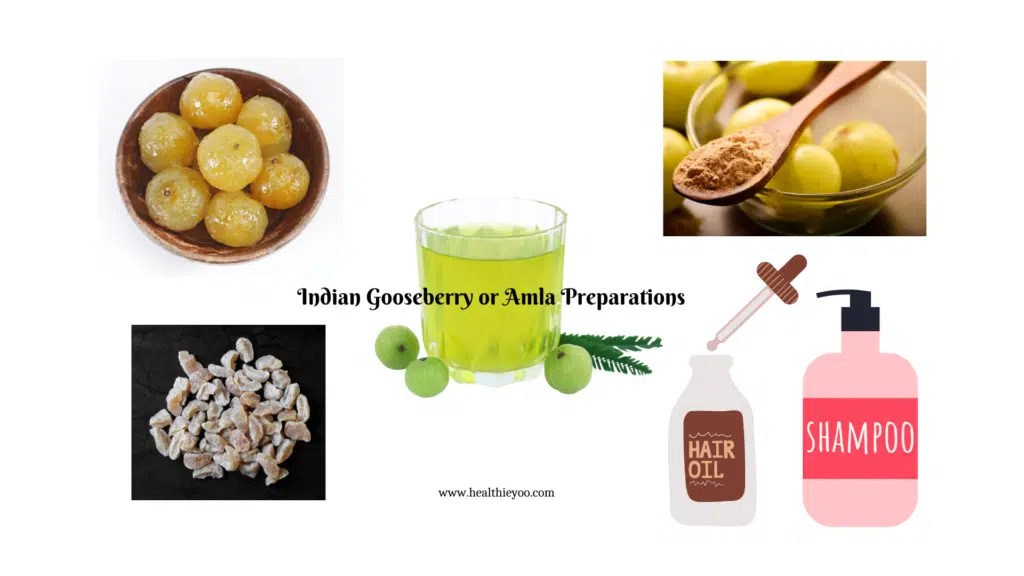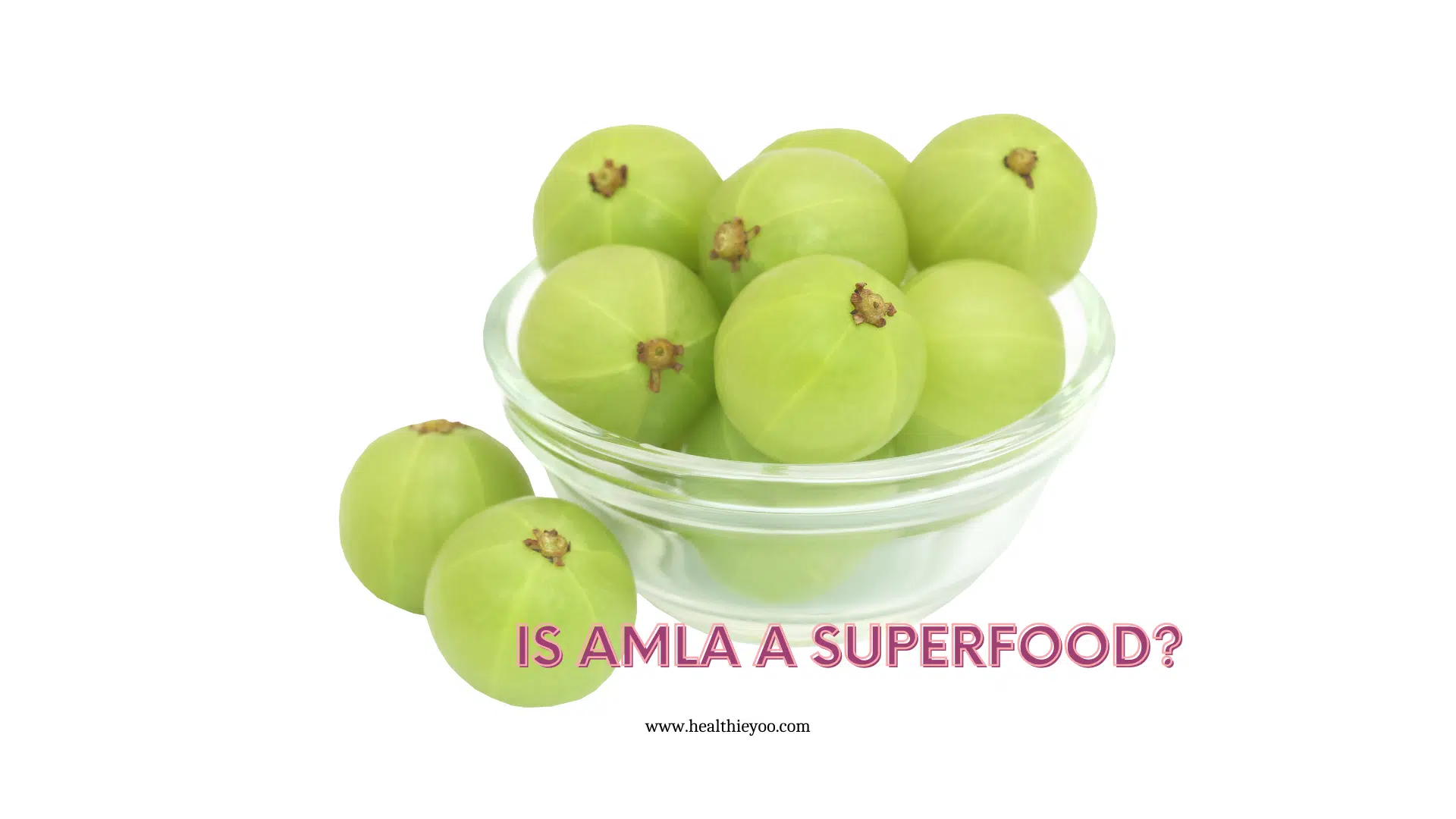Today we will talk about Emblica officinalis Gaertn. Do not worry, that’s not the name of a newly discovered dinosaur species. That’s just the Botanical name of the Indian Gooseberry or Amla Fruit. As the heading suggests, Amla fruit is a superfood and with this blog, we will find out if Emblica officinalis or Amla really is a superfood, or if it’s just hype.
Let’s first learn about this small green amla fruit.
What is Amla Fruit, and where is it grown?
As the name Indian gooseberry suggests, it is grown in India. Other than India, it’s also grown in India’s neighbors – Pakistan, China, Sri Lanka, and Bangladesh. But, you can grow it in other places as well, I mean who’s stopping you anyway.
Basically, Amla or Emblica Officinalis is a tropical plant, and it needs tropical weather. It starts giving fruit after 2 years of plantation. Young plant of Amla needs to be protected from hot winds and frosty weather; however, a mature plant can tolerate freezing temperatures. It’s very much like how we protect babies from the weather, but they take care of themselves when they grow up.
A mature tree of about 10 years will yield up to 50-70 kg of fruits (That’s a lot of vitamin C for you). 1 kg contains 15-20 fruits. That means, if you get 4-5 kg of Amla fruit, you can use it throughout the winter. Oh yes, I forgot to mention, Amla is a winter fruit and is available majorly in winter, although, later in this blog, I will tell you how you can get the benefit from Amla fruit throughout the year.
A well-maintained Amla tree can survive 70+ years, meaning if Healthieyoo plants a tree today, Healthieyoo plants a tree today, then their grandchildren can also enjoy the fruits from the same tree.
The nutritional content of Amla Fruit or Indian Gooseberry
100 gm of Amla fruit contains 9x times more vitamin C than oranges of the same quantity (478 mg). If we talk specifically within 100 gm, then the Amla fruit contains:
3- 5 gm of fibers
0.5 g total fat
1 g protein
58 kilo calories of energy
10-14 gm of carbohydrate
86 gm water
48 mg Omega-3 fatty acids
270 mg Omega-6 fatty acids
Iron 1.2 mg
Calcium 25 mg
Magnesium 10 mg
Potassium 198 mg
Zinc 0.12 mg
Emblica officinalis (Amla) also contains vitamins A, E, copper, chloride, and manganese. However, this Indian gooseberry doesn’t contain vitamin K, D, B12, B1, B2, etc. But, that’s fine, please give Amla some leeway. It already has too many qualities, and it should be among your favorites already.
Why Emblica officinalis/ Amla Fruit is a Superfood?
Is Emblica officinalis (Amla fruit) a Superfood? Why is Amla fruit or Indian gooseberry good for you? I think this is the thing you wanted to know. You better be ready with your Amla fruit (if you can find one), because the list of benefits is huge, and you may feel hungry after reading it. Also, yes these lines may seem similar, as I have used these in an old blog that I’ve written for Healthieyoo. I think no one can sue me for plagiarism.
The benefits of Emblica Officinalis or Amla fruit are like these:
Amla fruit/ Indian gooseberry/ Emblica officinalis improves immunity
Amla fruit is rich in antibacterial and antioxidant properties. Daily consumption protects from colds and coughs. As mentioned, the Indian gooseberry (Emblica Officinalis or Amla fruit) is a great source of vitamin C, and a good deal of research suggests that vitamin C helps in building immunity.
To build immunity, you must have at least 1 Amla daily, even in summer. Later in this blog, I will share some interesting ways by which you can consume Amla fruit even in summer.
Amla fruit/ Indian gooseberry/ Emblica officinalis is good for eye health
It has been found that Carotene in Indian gooseberry or Amla fruit helps in improving vision. Daily consumption can solve problems like cataracts, itching, etc. Amla fruit also helps against age-related muscular degeneration
Amla fruit/ Indian gooseberry/ Emblica officinalis helps in burning fat
As I have mentioned before, Amla or Indian gooseberry is very low in carbohydrates and fat, plus it boosts metabolism, which helps in shedding the fat faster (This doesn’t mean that you can skip doing a workout).
Eat Amla fruit/ Indian gooseberry/ Emblica officinalis for healthy hair
Okay, this is my selfish reason for eating Amla fruit daily. I want healthy and strong hair and this Indian gooseberry or Emblica officinalis is doing that for me. I have felt that eating Amla fruit daily prevents hair fall and makes my hair shiny. Amla is high in Carotene and Iron, which overall helps in good hair health.
You can get benefits from Amla for hair health in the form of oil and shampoos which are very easily available in the market. Regular massage with Amla oil stimulates the roots, strengthens them, and promotes hair growth.
Amla Fruit/ Indian gooseberry/ Emblica officinalis is good for mental health
Phytonutrients present in Emblica officinalis or Indian gooseberry help in fighting free radicals. The latter may damage the brain cells. Hence, Amla fruit is good for mental health. The high amount of anti-oxidants helps in improving brain function and memory.
Amla fruit/ Indian gooseberry/ Emblica officinalis ensures good heart health
Amla is among those fruits that reduce LDL (bad cholesterol) and triglycerides. That also means that this Indian gooseberry will prevent any blockage in the heart. It also reduces inflammation, as it has anti-inflammatory properties, which means any risk of inflammation associated with heart disease reduces subsequently.
Amla fruit/ Indian gooseberry/ Emblica officinalis makes skin glow
The Indian gooseberry helps in removing toxins from the blood and helps in purifying it. This results in glowing skin. It is recommended to take 2 tablespoons of Amla juice daily for better skin.
Amla Fruit/ Indian gooseberry/ Emblica officinalis aids digestion
Amla has sufficient dietary fiber. Dietary fibers regulate bowel movement and help against irritable bowel syndrome. Regular consumption can also give relief from constipation and diarrhea.
Amla Fruit/ Indian gooseberry/ Emblica officinalis is good for women’s health
Indian gooseberry can help in controlling the hormonal balance and helps in flushing out toxins during menstruation. That improves women’s fertility. Regular consumption of Amla or Emblica Officinalis can even help in reducing period cramps. However, more study on that is needed.
I think those are sufficient advantages that can make you consider taking this superfood regularly. But, now the question arises how to take it? I mean I cannot accept anyone eating it directly. It has a strong tangy flavor, and you may or may not like it. The good news is, it’s available in various forms and that makes it easily available throughout the year.
Amla/ Indian Gooseberry/ Emblica Officinalis Products and Preparations
- Amla fruit is available in ready-made juice, you can have 2 spoons daily, and it’s easily available.
- The good news is it’s also available in candy forms. There are generally 2-3 types of Amla candies. It’s available in sour and sweet (added sugar) forms. You can enjoy such candies in all seasons.
- Murabba is also very popular in India. It is made with Amla and sugar syrup. You can also find it in markets.
- A different version of Amla Murabba is the Amla pickle. You can make it at home easily. I will share the recipe with Healthieyoo and you can find it easily on their social media handles.
- Amla or Indian gooseberry is also available in oil and shampoo form (as mentioned above). You can find that in drug stores or organic stores.
- Nowadays, Indian gooseberry is also found in toothpaste, face creams, and moisturizer, but that’s not for eating.
- Amla fruit is also available in powder form. That powder is consumed for digestive health. It can be found at an organic store or a place where you can find Ayurvedic medicines. Powder forms generally don’t have an expiry date, and you can store them for a long time.
I have asked my friends from Malaysia, the USA, Kenya, and the UK, and they told me that products of Amla are easily available in the stores and E-stores.
That’s too much information, but we are still not done with this blog. I swear this is my longest yet, but I’m enjoying writing it so far.
Next, we have some Side effects of Amla. It’s important to know some side effects as well

Side effects of Amla fruit or Indian gooseberry
- Amla juice can sometimes lead to dry skin.
- Amla fruit should be avoided during cough. Multiple articles have different opinions on this one, and I haven’t read anything evident about why Amla can be taken during cough. So, it’s better to avoid it.
- Amla fruit should be avoided after any surgery or if you are under any medications.
- Some people have allergies, and due to dense nutrient properties, Indian gooseberry can aggravate such allergies.
- For diabetic patients, Amla can fluctuate blood sugar levels.
FAQs
Hey, while researching, I came across multiple articles that do this. I thought it was a fun way to clear some more doubts about Amla fruit or Emblica Officinalis or the Indian gooseberry.
Q1: Can Amla fruit be a substitute for medicine?
A: No, That’s not a good idea. Amla or any other fruit cannot be substituted with any medicine. I agree daily consumption can make things a little better. But, do as recommended by the doctor.
Q2: Can Amla fruit be taken during Dengue?
A: During dengue, many people can experience low platelets. Amla or Indian gooseberry is a good source of electrolytes that can improve platelet count.
Q3: Is Amla safe?
A: Amla didn’t pop up yesterday, it is believed that Indian gooseberry is being used in Ayurveda for treating various ailments for over 5000 years. So, yes it is safe.
Q4: Can I get the benefits of Amla fruit from its products?
A: Yes you can. Multiple products are available in the market, and you can have them regularly.
Q5: What does Amla treat?
A: Amla and its products are used for the treatment of Asthma, Tuberculosis, Jaundice, piles, etc.
In the end
So, I hope I am successful in convincing you about Amla fruit or Indian gooseberry, or Emblica Officinalis as a superfood. As you have read some of its health benefits, you should consider including this in your diet. You are free to decide how you are taking it.
You can drop your valuable comments on Healthiyoo’s social media handles. This blog was long, and I need some energy, maybe I will eat some Amla after this.
References
https://pubmed.ncbi.nlm.nih.gov/29099763/
https://pubmed.ncbi.nlm.nih.gov/32724620/
https://www.ncbi.nlm.nih.gov/pmc/articles/PMC4296432/
https://pubmed.ncbi.nlm.nih.gov/17343883/

Devang Upadhyaya
Related Posts

High Oxalate Foods – Beware!
High oxalate foods and risk of kidney stones? Check out what are oxalates, know foods high in oxalate, foods low in oxalate and ways to

How To Have A Happy Gut For A Happy You!
Food And Mood Connection and the happiness gut connection – Did you know that happy foods lead to happy moods via a happy gut? Mental

Nutrients in Fruits and Vegetables
A healthy diet should include plenty of fresh fruits and vegetables. They are high in important vitamins, minerals, fiber, and other nutrients for overall health.

Superfood Avocado
Is Avocado A Superfood? Is Avocado a Superfood? Well, yes! Today, we will talk about a superfood, or should I say a super fruit:

Superfruit Berry – A berry bite of health and happiness
Blueberry, Gojiberry or Wolfberry, Cranberry and Strawberry, whether fresh or dried berries are all excellent superfruit berry choices. It is vital to consume a variety

The Health Benefits of Eating Walnuts
Walnuts deliver important nutrients & offer science-backed health benefits. They are the best source of essential nutrients & healthy fats. They have also been linked

